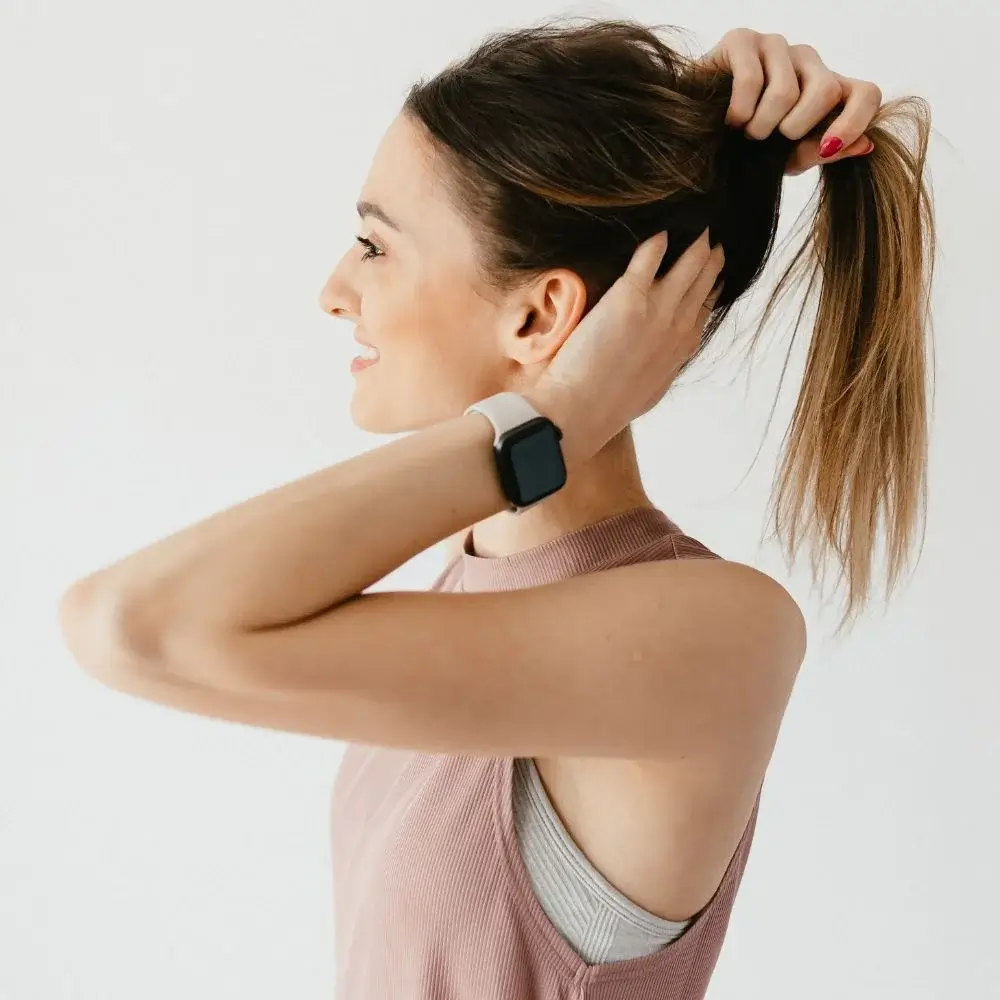Styling tools are often hard to resist. The possibilities are endless, whether it's a curling iron, straightener, or even a blow dryer. Especially for natural hair, these tools can offer a versatile but harmful solution to a smooth and glamorous look. Heat damage has long-reaching negative consequences that can lead to breakage, unhealthy or dull hair, and even hair loss. Fortunately, heat protectants can help minimize the damage, protect the hair shaft, and maintain the natural texture. In this blog, I will explain everything you need about heat protectants and how they work on natural hair.
Hair is strong, but it is also delicate. It’s made of protein and can easily damage when exposed to high temperatures. This is why we use heat protectants. Heat protectants are products designed to shield the hair and decrease the risk of heat damage. They do this by creating a protective coating on the hair's surface. This coating helps to reduce the heat's impact on the hair while keeping it soft and shiny.
The active ingredient in most heat protectants is silicones - a chemical compound. Silicones play a critical role in the formula and work to create a barrier between the heat and your hair. They form this barrier by filling in the gaps and cracks in the hair cuticles, which helps minimize moisture loss during heat styling. Silicones also work to smooth the hair's surface, making it easier to manipulate the hair without extreme heat.
However, more of anything is needed. Overusing heat protectants or using too much at once may weaken hair and cause product buildup on your strands. This buildup can lead to dullness or hair loss if you don't wash your hair thoroughly. To avoid these issues, it is essential to follow the manufacturer's instructions to ensure you use the correct amount.
Another thing to note is that not all heat protectants are created equal. Some can be highly effective, while others may need to work better. Consider the ingredients carefully when choosing a heat protectant for your hair. Many products are on the market, and it can be tough to sort through them all. Research the brand you are interested in purchasing, and always read the reviews to understand the experience of others who have used the product.
Natural hair is unique and needs specialized care. When choosing a heat protectant, it's essential to choose one that works best for your hair type. If your hair is coarse and kinky, you will need one that increases moisture retention. If your hair is thin and straight, you will need one that protects the hair without weighing it down. If you need help, speak to a stylist or professional that can recommend the appropriate product for your hair.
Heat styling tools can wreak havoc on natural hair if not used correctly. Using the proper heat protectant can make a significant difference in the health and efficiency of your hair. Heat protectants work by coating the hair and protecting it from moisture loss, breakage, and other damage. Be sure to choose the right product for your hair type, read the instructions carefully, and always be mindful of how much product you use. You can create any hairstyle with proper care and a heat protectant while keeping your hair healthy and vibrant.
Attention all beauty lovers and natural hair enthusiasts! We know the struggle of finding the best heat protectant for natural hair. The choices can be overwhelming, but fear not! Our team of beauty editors has done the research and found the absolute best heat protectant for natural hair. Don't let heat styling damage your tresses and hinder your style game. Click the link to discover your new holy grail heat protectant that keeps your natural locks looking fabulous and healthy.
What are the best heat styling practices to minimize damage to natural hair?
To minimize damage while heat-styling natural hair, following certain practices is essential. First, start with clean, conditioned hair to create a solid foundation. Use a heat protectant that suits your hair type, as different hair textures have unique needs. Opt for a high-quality, adjustable-temperature heat tool to avoid excessive heat exposure. Divide your hair into sections before styling to ensure even heat distribution. Avoid excessive passes of the heat tool and limit styling sessions to reduce the risk of overexposure. Embrace occasional heat-free styles to give your hair a break, promoting overall health and minimizing damage.

What are the steps to properly apply a heat protectant to natural hair?
Applying a heat protectant correctly is crucial for adequate heat styling protection. Begin with clean, towel-dried hair. Shake the heat protectant bottle well and hold it about 6 inches from your head. Spray evenly throughout your hair, ensuring every strand is covered. Comb through to distribute the product evenly. Allow the heat protectant to dry completely before using any heat-styling tools. This step ensures a protective barrier between your hair and the heat, reducing potential damage. Follow the specific instructions on the product label for best results.

What are the differences between heat protectants for various hair types, such as curly, coily, and wavy?
Heat protectants cater to different hair types due to their unique needs. For curly hair, look for lightweight, moisturizing protectants that combat frizz and enhance definition. Coily hair benefits from protectants with added nourishing ingredients like shea butter or argan oil to maintain moisture and prevent breakage—wavy hair benefits from heat protectants that offer a balance of hydration without weighing the hair down. Choose products with UV protection for all hair types, as the sun's rays can be damaging. Always check the product label and choose heat protectants specifically formulated for your hair type.

How do I properly cleanse my hair after using a heat protectant?
Properly cleansing your hair after using a heat protectant removes product buildup and maintains healthy locks. Begin by rinsing your hair thoroughly with warm water. Apply a sulfate-free, clarifying shampoo to remove any residue effectively. Gently massage your scalp and hair to lather the shampoo, then rinse thoroughly. Follow up with a nourishing conditioner to restore moisture and soften your hair. Once a week, consider using a deep cleansing treatment or hair mask to replenish lost nutrients. Regular cleansing after heat styling will keep your hair healthy and free from product buildup.

How can I create a heat-styling regimen that minimizes damage to my natural hair?
Crafting a heat-styling regimen that minimizes damage requires a combination of careful product selection and best practices. Invest in high-quality heat tools with adjustable temperature settings to avoid excessive heat exposure. Prioritize using a heat protectant specifically designed for your hair type to shield it from the damaging effects of heat styling. Limit the frequency of heat styling sessions and choose heat-free styles on alternate days to give your hair time to recover. Embrace protective hairstyles like buns or braids to minimize daily manipulation.
Should I use a heat protectant with a higher SPF if I live in a sunny climate?
Living in a sunny climate exposes your hair to other environmental stressors, making heat protectants with higher SPF beneficial. These filters shield against harmful UV rays, preventing color fading, dryness, and brittleness. If you reside in a sunny area or plan to stay outdoors, opt for a heat protectant with added SPF protection. Remember to reapply the product when necessary, especially after swimming or sweating, to ensure your natural hair remains safeguarded from the sun's damaging effects.







